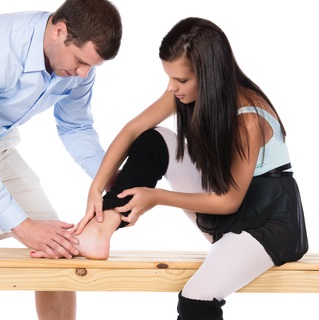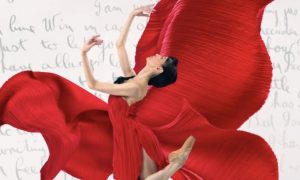By Leigh Schanfein.
Nutrition
We often think of using food as fuel: ingest it, burn it, use it for energy. However, food and beverages are what our bodies use for every function, from muscle contraction to nerve impulse to new cell formation! Many foods, especially natural and minimally processed foods, provide us with many nutrients that our bodies use in a myriad of ways. For example, the mineral calcium is well known for being a hugely important part of bone health by helping us build and maintain bone density. But, did you know that calcium is also critical for creating an electric impulse that travels down a nerve, or for allowing a muscle to relax after contracting? Our bodies host a complex orchestration that allows us to function under conditions ranging from maximal exertion to complete rest.
There are six nutrient groups: Carbohydrates, Proteins, Fats, Vitamins, Minerals and Water. Most foods contain more than one nutrient but it is important to eat a wide variety of food to make sure we get them all! ALL are important, so do not cut any out of your diet.
Carbohydrates are primarily used for short-term energy while fats are primarily used for long-term energy, insulation and cell formation. Proteins make muscles and many other cells, and we need to consume enough carbohydrates and fats so that we aren’t using up our proteins for energy.
Vitamins and minerals are used in many different bodily functions. Fat-soluble vitamins are easily stored in the body but water-soluble vitamins are easily flushed out so we need to consume them on a daily basis. Did you know water is a nutrient? It is so vital to your health that losing only 1% of your body weight in water can result in the ill effects of dehydration. Plenty of research has shown that losing even 2% can result in huge deficits in physical and mental performance!
Gradual Loading
This sounds like a term more suitable to carrying boxes! Basically, we do not want to overwork our bodies by doing too much too soon. We should make physical changes gradually. Research has found that dancers tend to get injured when they have a dramatic change in their workload, either a rapid increase in the amount of dancing or a quick transition to a new style of dance for which the body is unprepared.
How can we prepare our bodies for such changes? Rather than jumping right into a new schedule or new repertory, we should do what we can to introduce our bodies to the change by taking time to increase the volume and/or intensity of physical load. This could mean gradually increasing the number of classes we take as we transition from time off back into our full dance schedules. Or it could be increasing the number of repetitions we do of class combinations to improve strength or endurance in preparation for starting a new rehearsal period.
Another example might be as specific as introducing our bodies to a new dance style or choreography. A little research will go a long way; if you find out you will be doing modern rep and you are not used to working in parallel, start doing some exercises at home that strengthen your adductors and internal rotators. If you know you’re going to be doing a high intensity dance that has you sweating and panting, add some cardio exercises and increase your reps in class until your endurance is spot on. When you know the demands, you can make smart adjustments and prevent overuse and fatigue.
Crosstraining
As dancers, we often consider ourselves artists over athletes but, let’s face it, what we’re doing is extremely physical and we need to behave more like athletes when it comes to conditioning. A great way to make sure we are maximizing our physical potential, and thus reducing opportunity for injury, is by exercising in ways that are unlike the exercise we get through dancing. We can use crosstraining to improve our cardiovascular endurance, muscular endurance and muscular strength.
Dance tends to be anaerobic, meaning we don’t get very good cardiovascular endurance because we start and stop frequently and we dance for short durations. Yet, sometimes, on stage and in rehearsal we are asked to dance and exert ourselves for a long time without rest! Similarly, we tend to use the same muscles over and over through our technique classes or specific repertoire, and we do not get to improve the strength and endurance of the muscles that are not critical for our current work. This can get us in trouble when we find ourselves doing something new or trying to improve what we’ve always done. It’s important that we crosstrain outside of dance to improve our overall capabilities, focusing on cardiovascular endurance (getting your heart rate up), muscular endurance (making your muscles burn) and muscular strength (making your muscles sore). It’s favorable to do non-dance and low-impact activities to achieve this.
Rest
Rest is our oft forgotten but incredibly important state. Rest is the time the body takes to heal and improve function. For example, when your muscles are sore the day after working really hard it’s because you’ve created tiny microtears in your muscle fibers. It is when those microtears heal that your muscles become stronger, and healing must take place during times of rest. If you are feeling exhausted and muscularly fatigued, take it easy by decreasing your amount of dancing or replacing some dance with a low-impact activity like Pilates or floor-based barre. You could go to the gym and only work on muscles you don’t overexert in dance, or go for a nice walk around your neighborhood and definitely try to get adequate sleep most nights of the week.
As you can imagine, rest is necessary to prevent fatigue, which is a major factor for injuries. Research indicates that fatigue is one of the only factors correlated to injury occurrence and it is also one of the most preventable. Giving yourself time between classes and rehearsals, on the evenings or weekends, or the occasional vacation day can give you the rest you need to get over a plateau and improve performance as well prevent injury. Rest is also important for your immune system. Help your body boost immune function by getting enough sleep and resting so you don’t find yourself sitting out due to a cold!
Emotional Health
Last, but certainly not least, psychological or emotional health is one aspect all too easily forgotten or ignored when we think about our physical health and performance. Dancers are prepared to put up with a lot of physical pain, but are we so prepared to handle emotional stressors? Researchers examining mood among dancers have found correlations between negative factors like high tension and increased injury occurrence. Our minds and our bodies are intrinsically linked so we need to put just as much attention into our mental health as we do our physical health to ensure a healthy body. If you feel emotionally fatigued, it’s time to do something about it. Rest, spend time with positive friends and loved ones, give yourself time alone, pursue your non-dance interests, figure out a schedule that works for you, stay organized and do whatever it is that gives you peace of mind.
Photo (top): © Handmademedia | Dreamstime.com
















Pingback: Injury Prevention 101: 5 Healthful Fundamentals - Dance Life